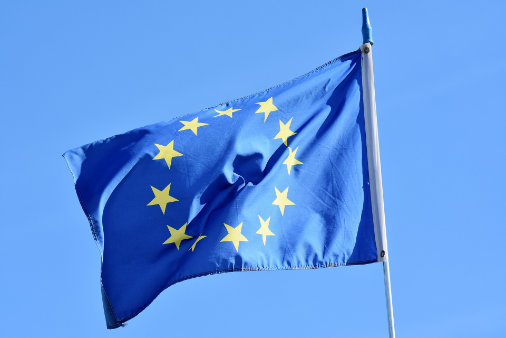PUBLICATIONS
European pillar of social rights
The European Pillar of Social Rights represents 20 principles by which the European Union encourages member states to build a social Europe that is fair, inclusive and full of opportunities. It is divided into 3 chapters with a total of 20 principles.
Through the project “Strengthening the capacity of civil society organizations in the implementation of the European Pillar of Social Rights”, CERANEO aims to strengthen the advocacy capacities of CSOs and other stakeholders for the implementation of ESSP at the national and local levels. The project was financed through the Fund for Active Citizenship in Croatia.

Monitoring methodology for EPSR
As part of the aforementioned project, a methodology was prepared for monitoring the implementation of the European Pillar of Social Rights in Croatia. Quantitative indicators (Table 1) and qualitative indicators that include key documents adopted for the implementation of EPSR in Croatia (Table 2) were collected.
Table 1
Quantitative data for the analysis of EPSR application in HR
| Indicator | Last value | Trend | ||
|---|---|---|---|---|
| Headline indicators | ||||
| Early leavers from education and training % of population 18-24 | 2.4 [2021] |
|||
| Individuals who have basic or above basic overall digital skills % of population 16-74 | 63.37 [2021] |
|||
| Young people neither in employment nor in education and training (NEET) % of population 15-29 | 14.90 [2021] |
|||
| Gender employment gap Percentage points | 10.50 [2021] |
|||
| Income inequality - quintile share ratio (S80/S20) Ratio | 4.78 [2021] |
|||
| Secondary indicators | ||||
| Adult participation in learning % of population 25-64 | 5.10 [2021] |
|||
| Tertiary education attainment % of population 30-34 | 33.70 [2021] |
|||
| Gender gap in part-time employment Percentage points | 2.30 [2021] |
|||
| Indicator | Last value | Trend | ||
|---|---|---|---|---|
| Headline indicators | ||||
| Employment rate % of population 20-64 | 68.2 [2021] |
|||
| Unemployment rate % of labour force 15-74 | 7.60 [2021] |
|||
| Long term unemployment rate % of labour force 15-74 | 2.80 [2021] |
|||
| Real gross disposable income of households Per capita increase (Index = 2008) | 124.66 [2021] |
|||
| Secondary indicators | ||||
| Activity rate % of population 15-64 | 68.70 [2021] |
|||
| Youth unemployment rate % of labour force 15-24 | 21.90 [2021] |
|||
| Transition rates from temporary to permanent contracts % (3 year average) | 40.00 [2020] |
|||
| In-work-at-risk-of-poverty rate % of population | 4.90 [2021] |
|||
| Indicator | Last value | Trend | ||
|---|---|---|---|---|
| Headline indicators | ||||
| At-risk-of-poverty or social exclusion rate (AROPE) % of population | 20.90 [2021] |
|||
| At-risk-of-poverty rate or exclusion of children % of population 0-17 | 18.60 [2021] |
|||
| Impact of social transfers (other than pensions) on poverty reduction % reduction of AROP | 20.66 [2021] |
|||
| Disability employment gap Percentage points | 28.70 [2021] |
|||
| Housing cost overburden % of population | 4.50 [2021] |
|||
| Children aged less than 3 years in formal childcare % of population 0-3 | 33.30 [2021] |
|||
| Self-reported unmet need for medical care % of population 16+ | 1.70 [2021] |
|||
| Severe material and social deprivation rate (SMSD) % of population | 3.50 [2021] |
|||
| Severe material and social deprivation rate (SMSD) for children % of population 0-17 | 2.60 [2021] |
|||
| Persons living in a household with a very low work intensity % of population 0-65 | 7.50 [2021] |
|||
| Children living in a household with a very low work intensity % of population 0-17 | 6.20 [2021] |
|||
| Secondary indicators | ||||
| Healthy life years at age 65 Years | 5.00 [2020] |
|||
| Aggregate replacement ratio for pensions Ratio | 0.38 [2021] |
|||
| Severe housing deprivation % of owners with mortgage or loan | 3.40 [2020] |
|||
| Out-of-pocket expenditure on healthcare % of total health expenditure | 10.45 [2020] |
|||
Profile of the Croatian welfare state
Based on the analysis of the prepared methodology for the implementation of the EPSR in Croatia, the Profile of the Social State was created – a publication that analyzes the implementation of the EPSR in Croatia.
In addition to the analysis of the prepared methodology, it also contains the results of research conducted with key stakeholders participating in the application of EPSR principles in Croatia. The analysis was carried out by the CERANEO team, in partnership with ALD Sisak, ZAGOR Association Network and MI Split Association.
Social scoreboard
The revised Social Scoreboard more comprehensively covers the EPSR principles and represents the main quantitative tool for monitoring the progress of EPSR implementation in the context of the European Semester.
It enables comparison between individual members in terms of equal opportunities and access to the labor market, fair working conditions, and social protection and inclusion. CERANEO prepared and adjusted the social scoreboard for Croatia.
Analyzes of European Pillar of Social Rights implemenatation
As part of this project, in cooperation with partner organizations, 4 analyzes of EPSR implementation were written for Krapina-Zagorje County, Split-Dalmatia County, Sisak-Moslavina County and the City of Zagreb.